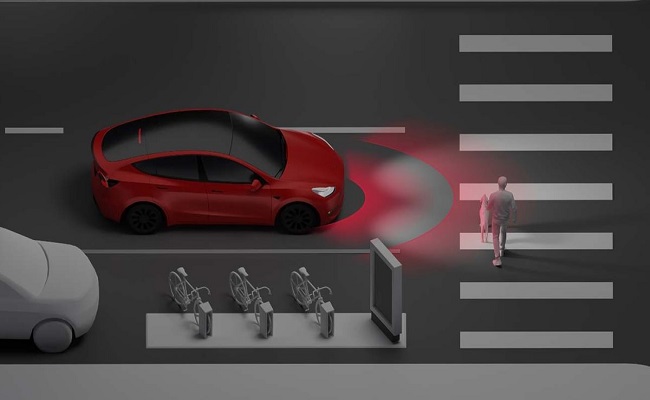In the fast-evolving realm of automotive technology, active safety systems have become the vanguard of innovation, promising to revolutionize road safety. Among these advancements, Autonomous Emergency Braking (AEB) and collision avoidance technologies stand out as pivotal tools in preventing accidents and saving lives. However, as these systems become increasingly integrated into vehicles, a complex web of legal and ethical considerations emerges, challenging traditional notions of liability and responsibility in the event of accidents.
The Technological Frontier
At the heart of AEB and collision avoidance technologies lies a sophisticated network of sensors, cameras, and algorithms designed to detect potential collisions and initiate evasive maneuvers autonomously. Leveraging radar, lidar, and advanced computer vision, these systems analyze the surrounding environment in real time, providing drivers with crucial assistance in avoiding accidents.
Autonomous Emergency Braking, for instance, can automatically engage the vehicle's brakes when an imminent collision is detected, mitigating the severity of impact or even preventing it altogether. Similarly, collision avoidance technologies employ steering interventions to steer the vehicle away from hazards, providing additional protection.
The Regulatory Landscape
As these technologies gain prominence, governments worldwide are grappling with the task of regulating their use effectively. Regulatory bodies are tasked with ensuring that these systems meet stringent safety standards while navigating the intricate legal terrain surrounding liability and responsibility.
In the United States, the National Highway Traffic Safety Administration (NHTSA) has taken proactive steps to encourage the adoption of AEB and collision avoidance technologies. By integrating these systems into its New Car Assessment Program (NCAP), the NHTSA aims to incentivize manufacturers to prioritize vehicle safety features.
Similarly, the European Union has mandated the inclusion of AEB in all new vehicles since 2022, reflecting a global trend towards prioritizing active safety measures.
Legal Implications
One of the most significant challenges posed by AEB and collision avoidance technologies lies in defining liability in the event of accidents. Traditionally, liability in car accidents is attributed to human error, whether through negligence, recklessness, or other factors. However, with the introduction of autonomous systems, the lines of responsibility blur.
In cases where AEB or collision avoidance systems fail to prevent an accident, questions arise regarding the liability of various parties. Should the driver bear responsibility for relying too heavily on the technology? Or should the manufacturer be held accountable for system failures?
Courts are grappling with these complex questions, often relying on precedent and evolving legal standards to navigate uncharted territory. Some argue that manufacturers bear a heightened duty of care when implementing these technologies, emphasizing the need for rigorous testing and validation. Others contend that drivers must remain vigilant and ready to intervene, even in the presence of advanced safety systems.
Ethical Considerations
Beyond the realm of law, ethical considerations loom large in the debate surrounding AEB and collision avoidance technologies. Central to these discussions is the concept of moral agency – the capacity for individuals to make moral judgments and act accordingly.
As vehicles become increasingly autonomous, questions arise regarding the allocation of moral responsibility. Should the decision to prioritize the safety of occupants over pedestrians be programmed into these systems? How do we reconcile competing moral values in designing and implementing autonomous technologies?
Ethicists, engineers, and policymakers grapple with these dilemmas, seeking to strike a balance between safety, autonomy, and moral integrity.
The Liability Lawsuit Process
In the aftermath of an accident involving AEB or collision avoidance technologies, the legal landscape becomes increasingly complex as parties seek to determine liability and seek redress through the legal system. The process typically involves several key stages, each fraught with its own challenges and considerations.
Accident Investigation
The process typically begins with a thorough investigation to determine the cause of the accident. This may involve gathering evidence from the scene, reviewing vehicle data logs, and interviewing witnesses. In cases where AEB or collision avoidance systems were engaged, retrieving and analyzing data from onboard sensors and cameras becomes crucial in understanding the sequence of events leading up to the collision.
Determination of Fault
Once sufficient evidence has been collected, parties involved in the accident – including drivers, vehicle manufacturers, and insurance companies – seek to determine fault. In traditional accidents, fault is often attributed to human error, such as distracted driving or failure to yield. However, with the presence of autonomous systems, fault may be more nuanced, involving considerations of system design, performance, and driver interaction.
Legal Representation
As disputes over liability arise, parties may seek legal representation to advocate for their interests and protect their rights. Attorneys specializing in automotive litigation play a crucial role in navigating the complexities of liability laws, product liability claims, and insurance coverage disputes. They work to build compelling arguments based on evidence, precedent, and relevant legal statutes.
Navigating the Road Ahead
As we navigate the frontier of active safety systems, it is clear that AEB and collision avoidance technologies hold tremendous promise in reducing accidents and saving lives. However, their integration into our legal and ethical frameworks poses profound challenges that demand careful consideration.
By fostering dialogue among stakeholders – including policymakers, manufacturers, legal experts, and ethicists – we can ensure that these technologies serve the common good while upholding principles of justice, accountability, and ethical integrity. Only then can we truly harness the potential of autonomous safety systems to create a safer and more equitable future on our roads.
